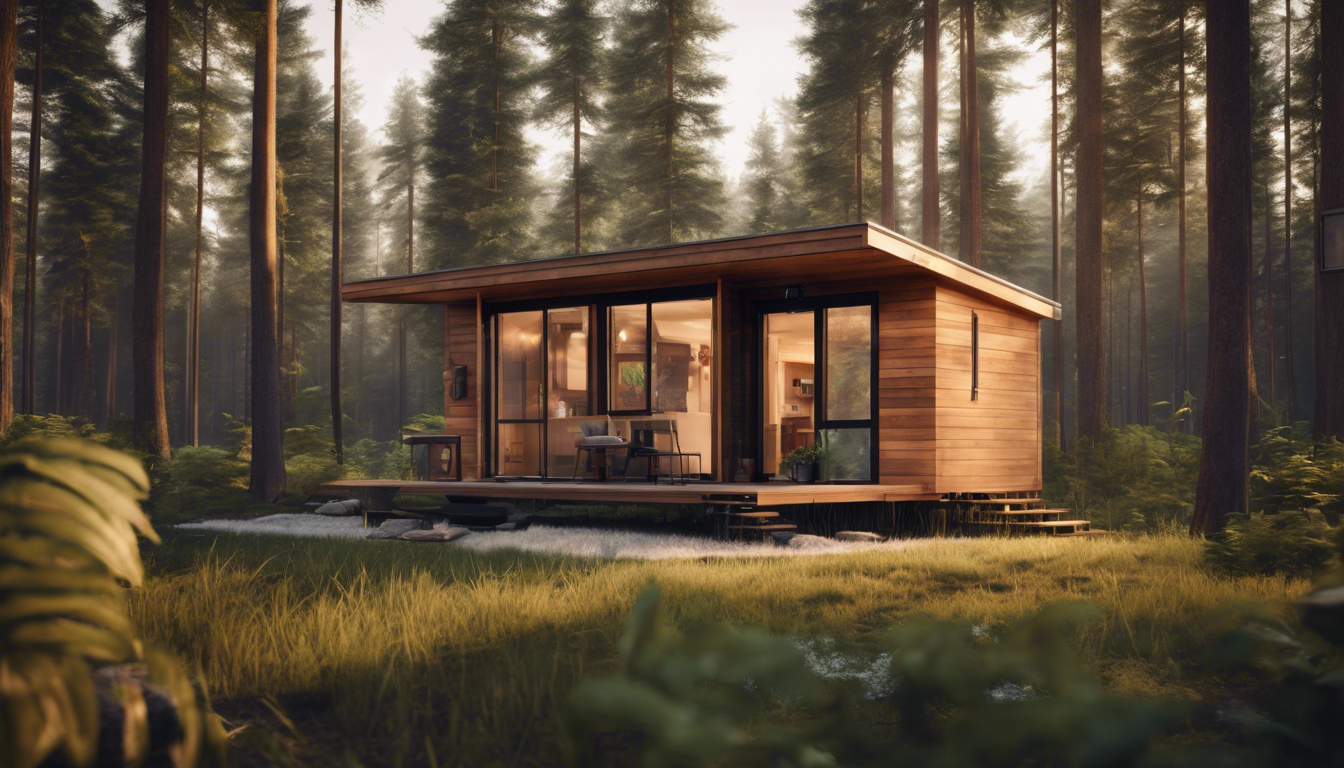Tiny home communities are gaining popularity as a unique living option.
These communities feature small houses that promote simplicity and intentional living.
People are choosing tiny homes for various reasons, including financial savings, environmental awareness, and social interaction.
This article will explore the benefits of living in a tiny home community.
We will discuss how these spaces provide financial freedom, encourage sustainability, foster connections among residents, and the challenges you may face.
Discover why a tiny home community might be the perfect lifestyle change for you.
The Most Popular Modular/Tiny Home On Amazon
Environmental Impact and Sustainability
Tiny home communities offer a sustainable alternative to traditional housing.
These communities often use fewer resources, leading to a smaller carbon footprint.
By emphasizing efficient use of space, tiny homes minimize waste and encourage recycling.
Many tiny home builders integrate solar panels and rainwater collection systems, further reducing environmental impact.
Residents also often share communal resources, fostering a sense of community while promoting sustainability.
As urban areas face housing shortages and environmental concerns, tiny home communities provide practical solutions that benefit individuals and the environment.
Community Living and Social Connections
Tiny home communities promote strong social connections and a sense of belonging among residents.
These neighborhoods consist of small homes clustered together, encouraging interaction and cooperation.
People in tiny home communities often participate in shared activities, like group meals and gardening.
This shared lifestyle fosters friendships and support networks.
Residents typically value sustainability and minimalism, leading to a shared commitment to care for the environment.
Living in close quarters encourages communication and collaboration, making it easier for residents to build lasting relationships.
Additionally, these communities often host events and gatherings that strengthen ties and create a welcoming atmosphere for everyone.
Challenges and Considerations of Tiny Home Living
Living in a tiny home community presents various challenges and considerations that potential residents should understand.
Limited space is one of the primary concerns.
Downsizing means you must prioritize possessions and find smart storage solutions to maximize functionality.
Additionally, modern amenities may be fewer in tiny homes, which can require adjustments in lifestyle.
Connection with others in a tiny home community is essential.
Building relationships with neighbors can foster support and collaboration, but it may also involve negotiating space and privacy.
Zoning laws and regulations can also pose challenges, as some areas restrict the placement and construction of tiny homes.
Residents must research these local laws to ensure compliance.
Sustainability is often a key benefit of tiny home living, but it requires careful planning to manage resources effectively.
Understanding these factors helps individuals make informed decisions about joining a tiny home community.
Frequently Asked Questions
What are the primary benefits of living in a tiny home community?
Living in a tiny home community offers financial freedom, environmental sustainability, and a strong sense of community among residents.
It allows for affordable housing options while promoting minimalistic living.
How does living in a tiny home community contribute to financial freedom?
Tiny home communities typically offer lower housing costs, reduced utility bills, and minimal maintenance expenses.
This enables residents to spend less on their housing and save more for experiences, travel, or other financial goals.
What is the environmental impact of tiny home living?
Tiny homes tend to have a smaller carbon footprint compared to traditional homes, as they require fewer resources to build, use less energy, and often promote a sustainable lifestyle.
Many tiny home communities incorporate eco-friendly practices and materials.
How do tiny home communities foster social connections?
These communities encourage social interaction through shared spaces, community events, and a focus on collaboration among residents.
This can lead to lasting friendships and support networks, enhancing the overall living experience.
What challenges should I consider before moving into a tiny home community?
Challenges can include limited space for personal belongings, potential zoning regulations, and the need for flexibility in living arrangements.
Additionally, adjusting to a smaller lifestyle and communal living can be a significant transition.




Leave a Reply